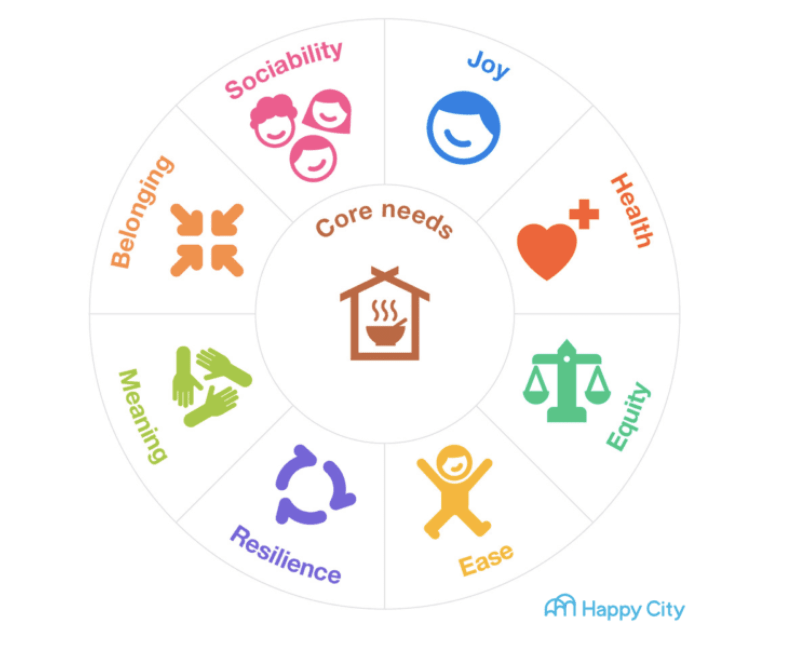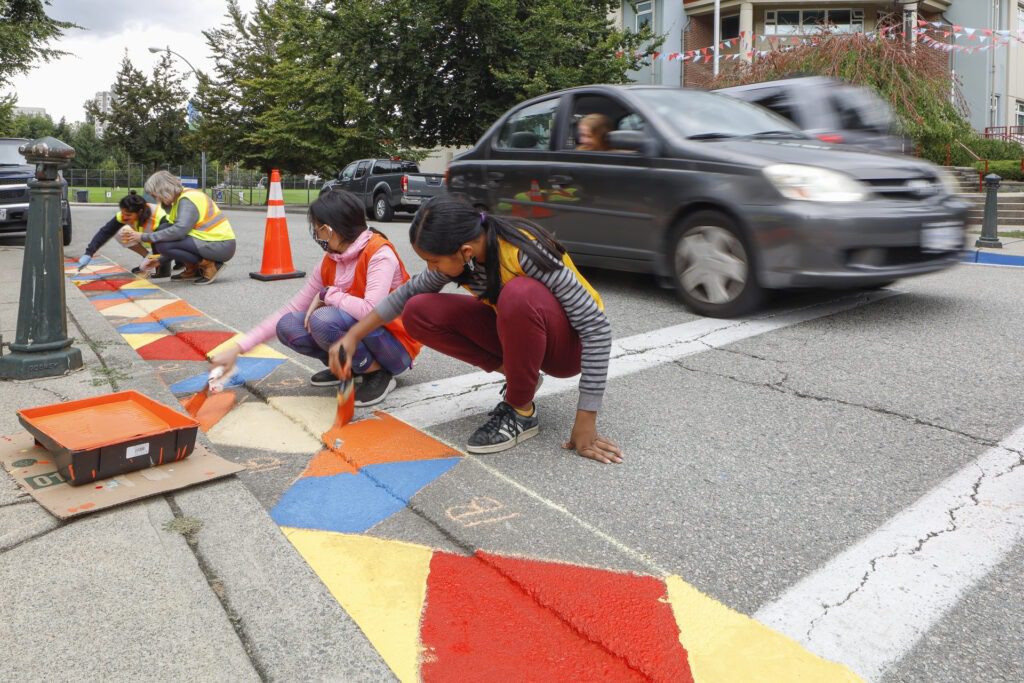Author: Cities4Children
Ahead of this year’s International Day of Happiness, we take a look at what can make cities happy places, and what urban planners and those in power can do to bring more joy and life to cities.
Cities are rarely depicted as happy places. In films, they’re either overcrowded and full of stressed people dodging yellow taxis in downtown Manhattan, or they’re noisy, polluted and dirty. As the world’s population continues to urbanise, thinking about how to make cities places where we feel well and happy should become a more important theme. They are our homes, full of life, places we bring up children, and places where we live full and hopefully happy lives.
As March 20th is International Day of Happiness, we reached out to Happy City, a Vancouver-based urban planning, design and research firm that turns evidence into action for healthier, happier and more inclusive communities. We found the firm through their work related to Charles Montgomery’s bestselling book, Happy City: Transforming Our Lives Through Urban Design. We had a conversation with Hannah Wright, who works to deliver Happy City’s European projects and supports their placemaking efforts with a specialisation in child-friendly planning. We asked her about what a Happy City really looks like. While her perspective is predominantly European where most basic needs are met, her viewpoint offers some ideas for efforts to make cities around the world happier places.

Diagram that shows everything that’s needed to make a happy city. Credit: Happy City
What does a happy city look like?
A happy city is one where core needs are addressed, says Wright. Happiness means something different to every individual, so before diving into what city interventions can make a happy city, we first look at the important conditions for wellbeing. This means how people assess their own state of happiness (subjective wellbeing), the degree to which people live their full potential, psychological and physical wellbeing.
Children play a crucial role in a happy city. They are a vital part of every community – they have a right to play and a right to the city. And they are a vital part of changing the way decisions are made in cities. Seeing children playing and enjoying time with people of all ages out on the street is a strong demonstrator of what a happy city can look like.
In your opinion, can a city truly be a happy experience for everyone living there?
Wright believes that steps must be taken so that the whole community can feel included and content in their city. “An intervention is unlikely to make all people happy, nor all in the same way – everyone has different interests. Yet we can make efforts to make everyone in the city happier, adapting to the needs of the community. There are also some things that I believe contribute to all people’s wellbeing and can thereby be unifiers of community – for example food, nature and childhood!”
How can a city be happy for children too?
When Wright worked at Arup, she led the development of the Designing for Urban Childhoods publication. There, she highlighted the need for everyday freedoms – providing things to do and ensuring children have the independence to do them.
She explains that ensuring children become happy in cities means focusing on more than just building good playgrounds and schools. “The whole of the public realm can be a place for play and stimulating interactions for children and adults together. For younger children who depend on their caregiver, it means supporting healthy interactions between caregivers and children, by taking care of caregiver mental health in the planning and design of the city and its services.”
Wright shares some examples that she feels really encapsulate what it means to be a happy city. “Imagine for example a caregiver feeling confident to let go of their child’s hand so they can play on the sidewalk. Imagine a city with kids who feel confident navigating the city alone. Or places where families are more likely to spend time together outdoors, with freely accessible activities, natural spaces and limited traffic, noise and air pollution.”

Co-created barrier painting along Agnes Greenway, during a placemaking and engagement pop-up event, July 2021 Credit: Isabel Garcia
If you were to suggest three ways city planners could improve levels of happiness for children and their caregivers, what would they be?
- Observe and understand – it sounds simple yet it takes a conscious effort to go out into the city, look and ask. Take a look at how and where people spend time, says Wright, how happy do people say they feel in that space, and what stressors like noise or pollution exist.
- Make time to experiment with space too. What has been successful for children and families is closing streets to traffic, bringing nature and spaces into the city to socialise, and building momentum with local communities and placemakers when considering urban development.
- Ask: who is the city for? Consider what space is available for different generations to spend time together. How does this compare to the space granted to traffic? And what is the quality of experience in everyday journeys throughout the city for children and caregivers, who move very differently to those commuting to and from work?

Bollard art, co-created with children at a nearby school, and installed along an interim bike route as part of a placemaking and engagement process. Credit: Isabel Garcia
Is there anywhere you think has done a great job in facilitating joy in the city?
Wright cites Cape Town in South Africa, as a great case study where the municipality is bringing the community together to remember play and joy with open streets. In Tirana (Albania), the Mayor has allocated a budget to improve conditions for young people, proportionate to the population, including investing in parks where families can spend time together. Paris (France) is cooling, greening and opening up schoolyards to tackle climate change while inspiring children and adults to connect to nature. She also references Zapopan (Mexico) which has adapted a co-design model for public space where kids are the decision makers of what is included in the public realm.
The Ideas4Action series aims to inspire with ideas that have worked in other cities and countries so that you too, can take action in your own city. Read more of our blogs here.
This work is licensed under a Creative Commons Attribution-NonCommercial-NoDerivatives 4.0 International License. When re-sharing this content please ensure accreditation by adding the following sentence: ‘This blog was first published by the Global Alliance – Cities4Children (www.cities4children.org/blog)’

